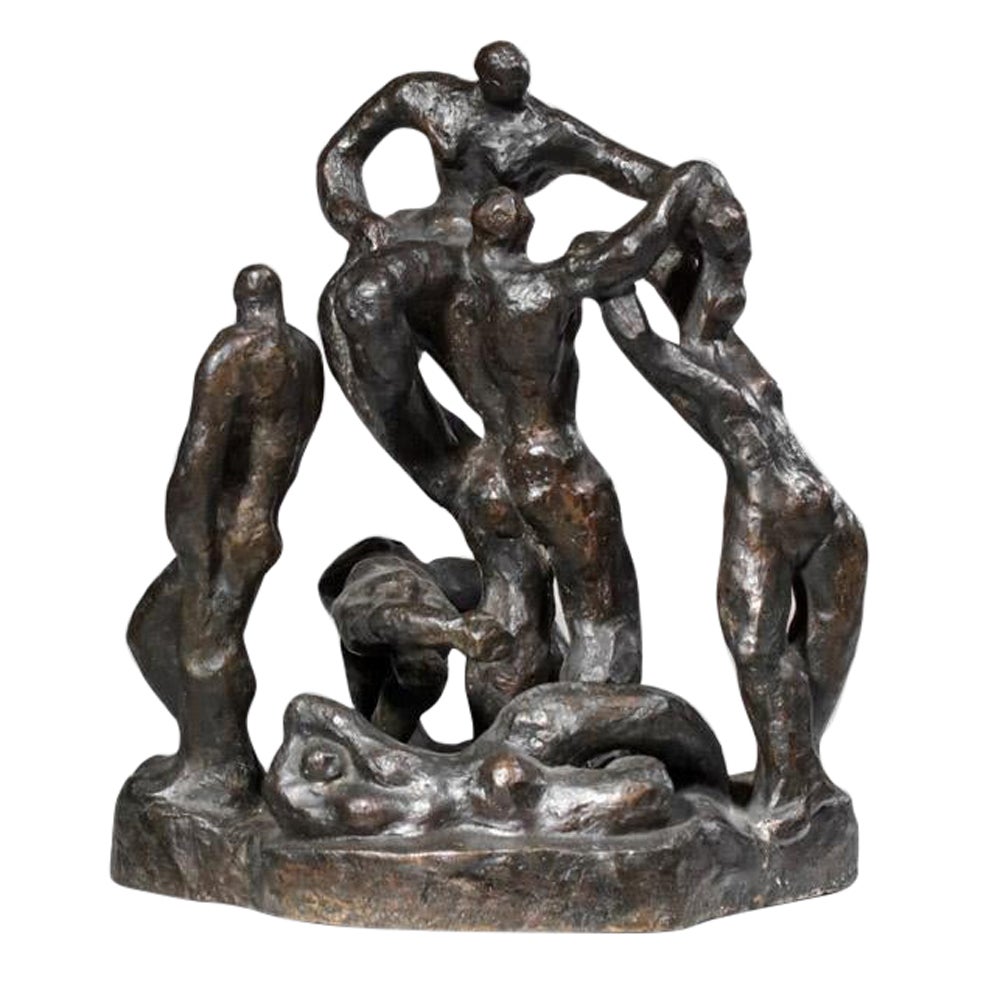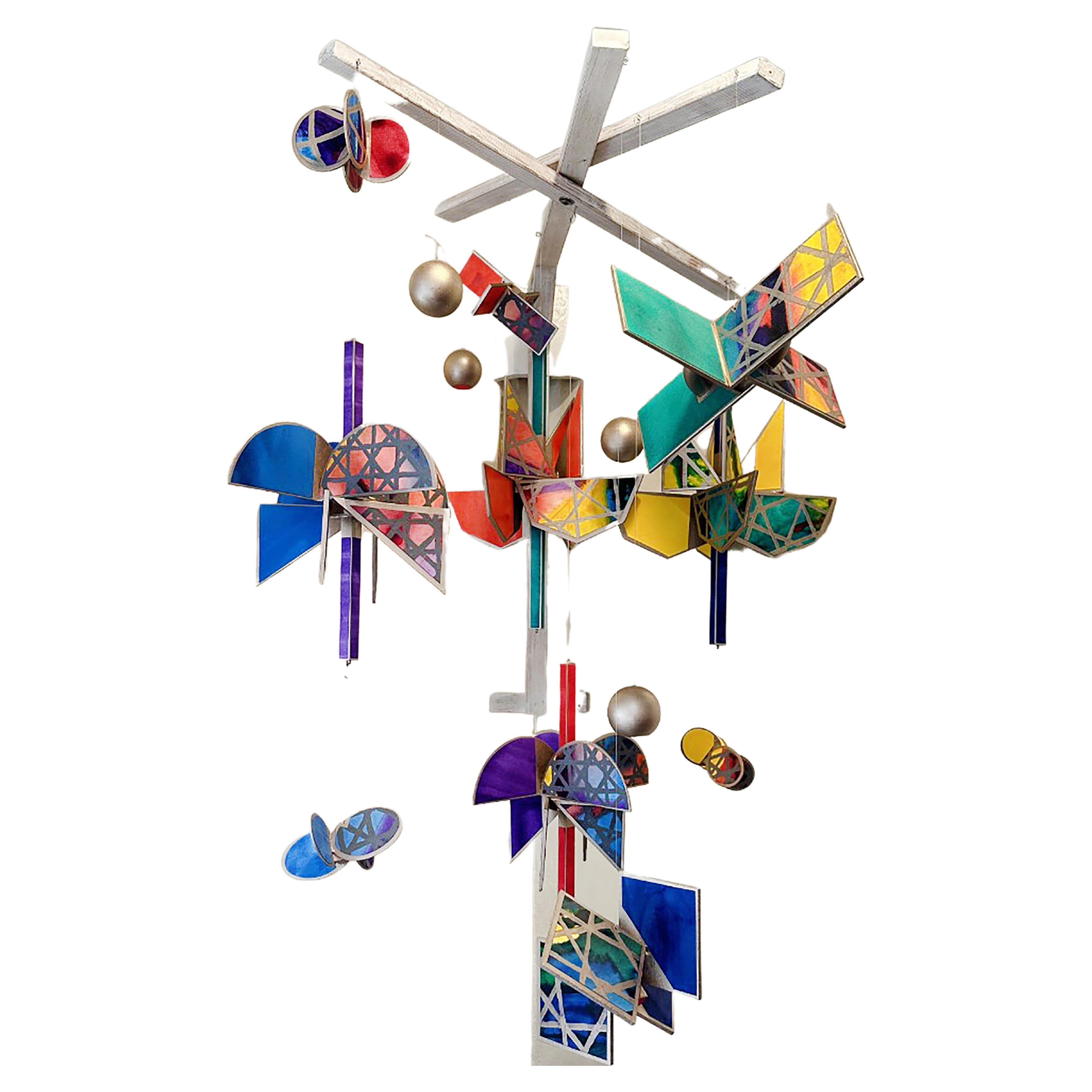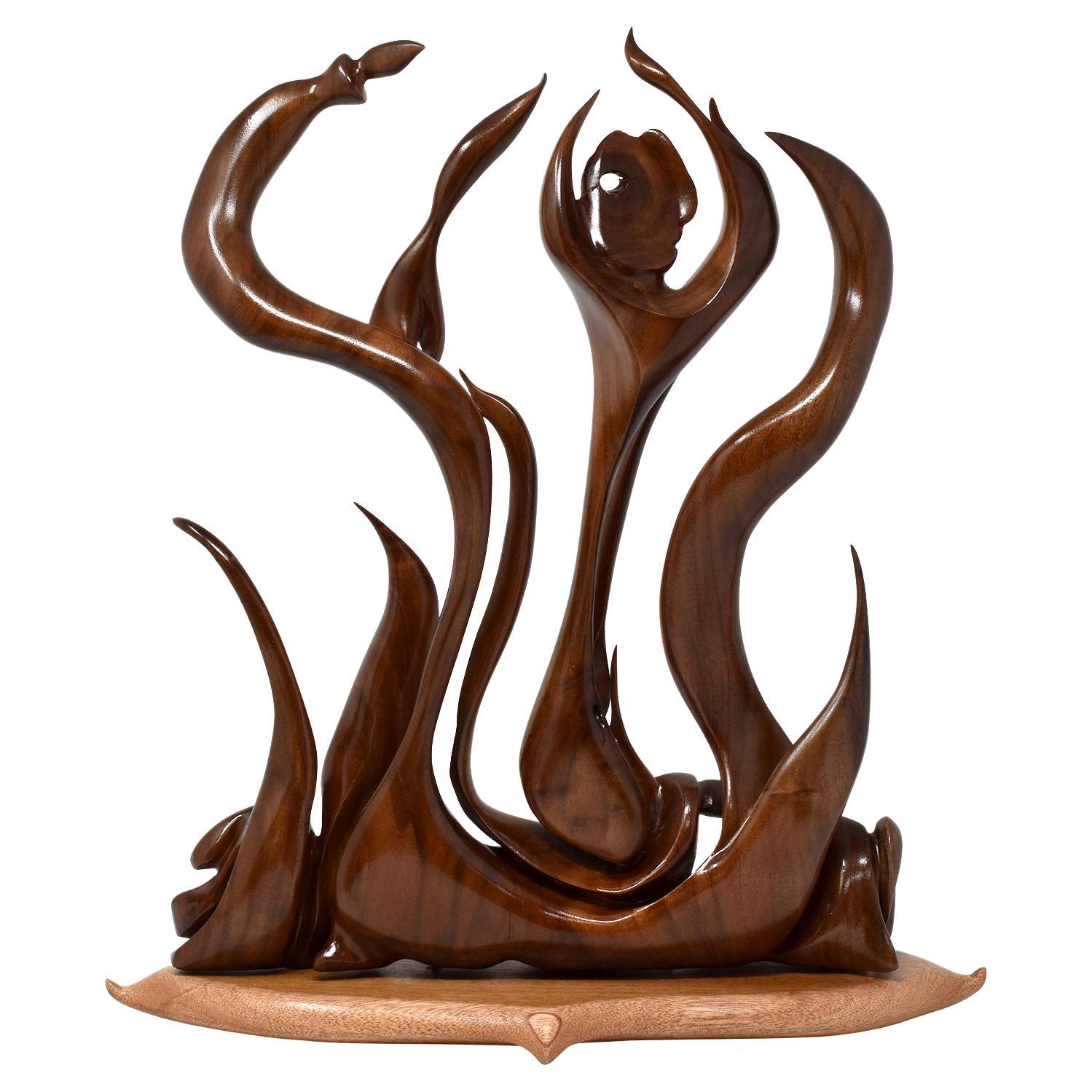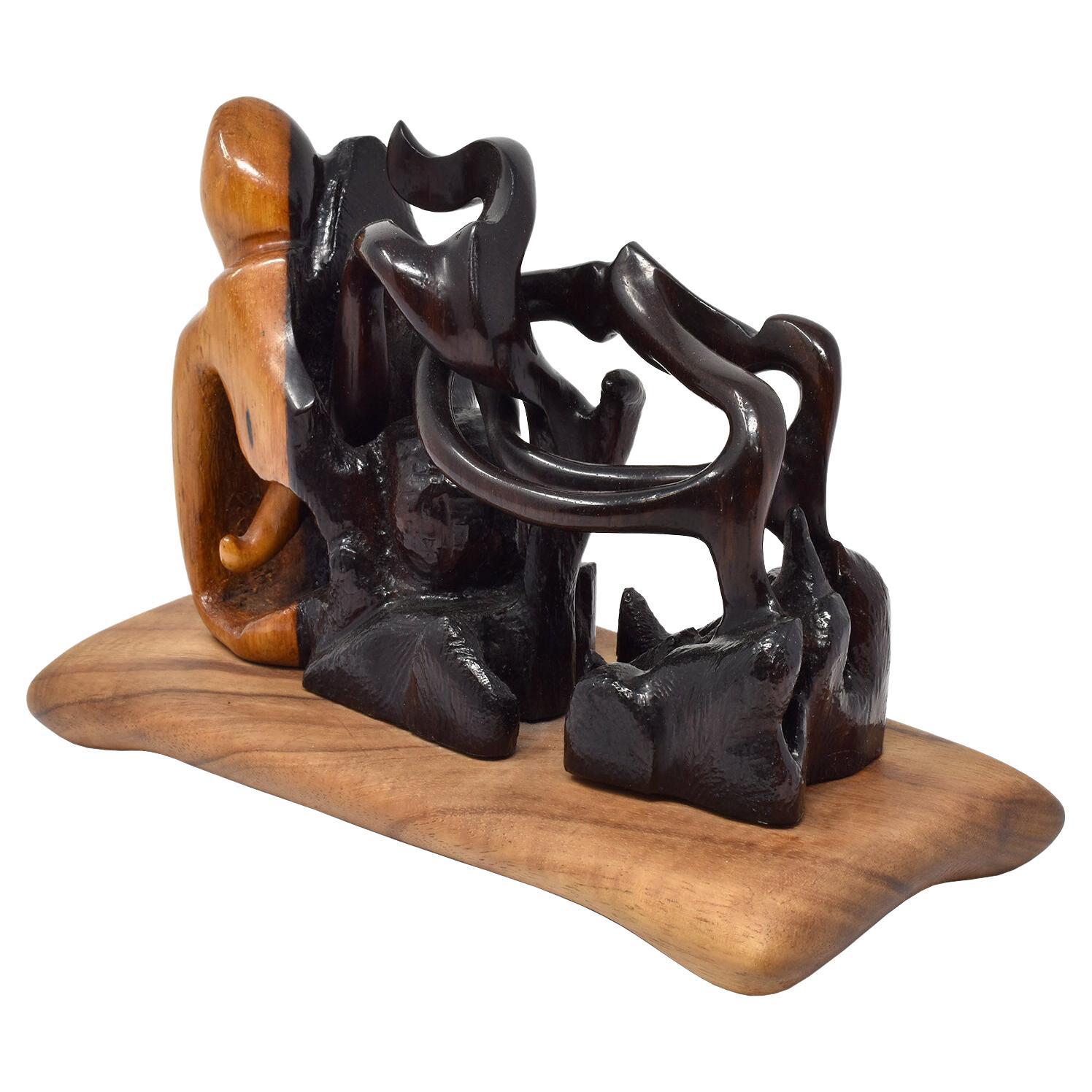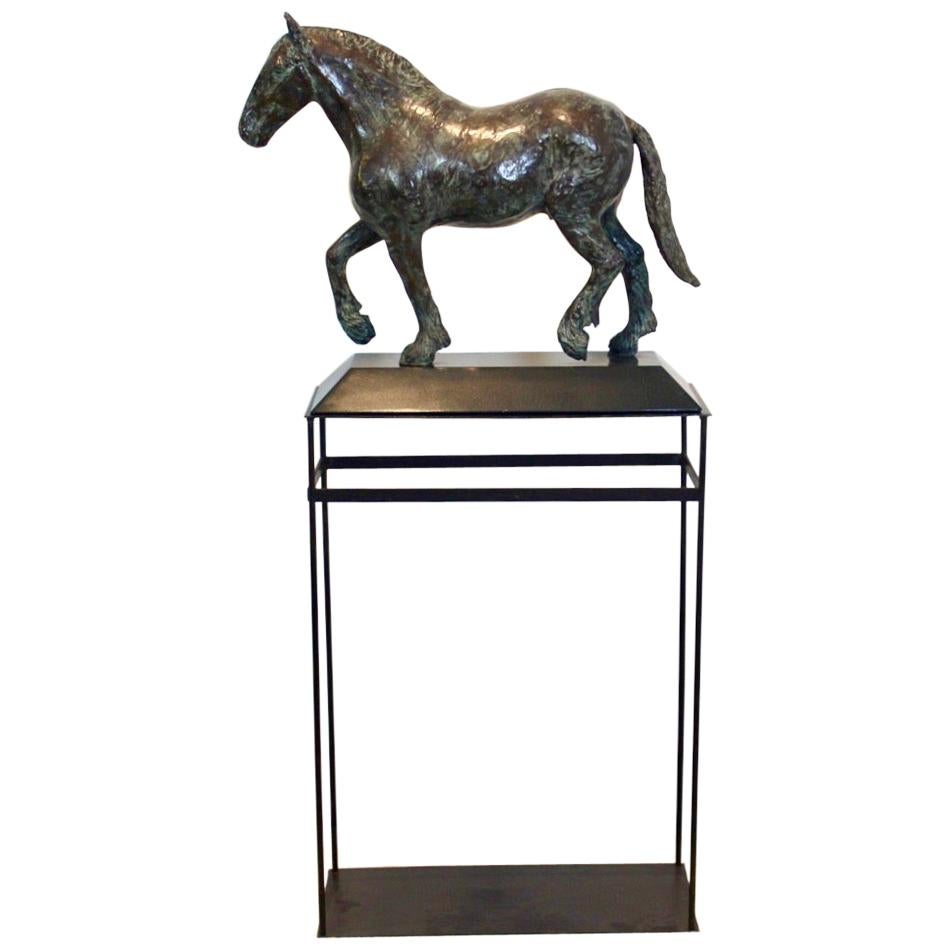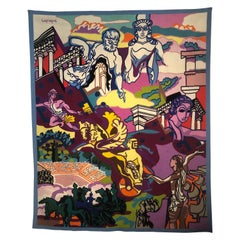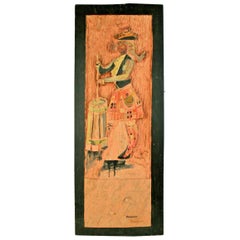
Carousel Jumping Horse Illions Derby Racer by the Jewish Artist Marcus C.Illions
View Similar Items
Want more images or videos?
Request additional images or videos from the seller
1 of 18
Carousel Jumping Horse Illions Derby Racer by the Jewish Artist Marcus C.Illions
About the Item
- Creator:Marcus Charles Illions 1 (Artist)
- Dimensions:Height: 50.01 in (127 cm)Width: 75.2 in (191 cm)Depth: 17.72 in (45 cm)
- Materials and Techniques:
- Place of Origin:
- Period:
- Date of Manufacture:1889
- Condition:Wear consistent with age and use. The horse is sold without pedestal /socle Restoration have been maybe made but not from us. We buy it as showned.
- Seller Location:Paris, FR
- Reference Number:1stDibs: LU4817218665112
About the Seller
5.0
Vetted Seller
These experienced sellers undergo a comprehensive evaluation by our team of in-house experts.
Established in 2017
1stDibs seller since 2019
53 sales on 1stDibs
Typical response time: 18 hours
More From This SellerView All
- Rare and Stunning Barbini Murano Sommerso Red Gold Flecks Coral SculptureBy BarbiniLocated in Paris, FranceBarbini red gold flecks art Murano glass coral sculpture. Intense red coral branch and gold flecks infused on a clear glass pot. The coral has a brass ring between the branch and the...Category
Mid-20th Century Italian Figurative Sculptures
MaterialsArt Glass, Murano Glass
- French Artist Charles Lapicque Tapestry Limited Edition 1/2 "Pelops", 1964By Charles LapicqueLocated in Paris, FranceExceptional limited edition 1/2 tapestry "Pelops" with certificate from a private collection, 1964. Ateliers Pinton brothers in Felletin, under the supervision of Pierre Baudouin 2ex + 1EA Editor Aram Iynedjian. The tapestry will be sold with its certificate of authenticity from the gallery. From the 15th century, the name of Pinton was associated with the Aubusson tapestry. Since then, over the generations, the Pinton family has largely contributed to the development of this fabulous cultural heritage until the creation in the 19th century, of the Felletin factory, in the department of Creuse. Even today, in these workshops, the craftsmen execute the same correct gestures with the same attention to detail and thus extend the chain of the history of the tapestry of tradition but also contemporary. The hand of specialists, the eye of designers and dyers and the taste of the most demanding clientele find their meaning in the fabric of the carpets. The excellence of French know-how, a living heritage society and custodian of Aubusson's cultural heritage, has always collaborated with great artists. The works of Charles Le Brun, Charles Lapicque, Pablo Picasso, Jean-Michel Othoniel, and many other big names in the world of painting, architecture, design, fell into the looms and know-how ancestral of this unique Creuse creator. Editor Aram Iynedjian Aram Iynedjian, Lausanne gallery owner and editor of tapestries from Braque, Estève and Lapicque, the latter meets Pierre Baudouin, the most famous of the cardboard painters of the time. The one who translated the works of Le Corbusier, Calder or Picasso into tapestry then collaborates with Charles Lapicque and they will develop a work of great richness. Lapicque came to realize these two summits which are "Pélops" and "Diane et Actéon". I realize that you should never try to describe a work of art Let’s look at it. Let us admire the science of composition, linear purity, technical perfection, the beauty of color, the truth of the drama. Let us see, if we can, the implacable presence of genius. "We will now understand that after having based a painting on the love of tapestry, it was relatively easy, and very tempting, to build a tapestry faithful to my painting," explained the artist in the exhibition catalog. of the Galerie Verrière in 1970. It was not until 1961 that he began to produce cardboards both for the tapestry of the Lisse in Aubusson, but also at the Mobilier National, with the help of Pierre Baudouin Charles Lapicque (1898-1988) Born in 1898 in Theizé (Rhône) in a family practicing both the arts and the sciences, Charles Lapicque is no exception to the rule: gifted for music and drawing, he graduated from the École Centrale in 1921, works as engineer until 1928 before integrating in 1931 a laboratory at the Faculty of Sciences of Paris, where he carried out research on the perception of colors, crowned by the title of Doctor of Physical Sciences in 1938. He thus studies the reactions of the eye in front of an intense light source, at the origin of the formation of starry images which he will use in his works, and defines a theory of the staggering of colors in space which overturns the rules of the Renaissance: "I had shown that the Classic rule, that of Vinci, advocating placing the blues in the distance, the reds, oranges and yellows in the foreground, is a nonsense; it makes more sense, more favorable to do the opposite. "(In Red and blue in the arts, 1936) It was around 1920 that Charles Lapicque began to paint in Brittany where he spent every summer since his childhood, first on the motif and then in a workshop that his stepfather Jean Perrin, Nobel Prize in Physics, had him build in 1927 ; he then definitively adopted the work of memory, in accordance with the art of music which he deeply loved and the Bergsonian philosophy of knowledge: "It is up to us to give reality an appearance that it has no itself, a form, a figure (...). " His youthful production immediately reveals a great originality, oscillating between figuration and abstraction which sometimes intertwine: alongside synthetic paintings by their simplified drawing and their flat colors, he designs an Homage to Palestrina (1925), composed of a grid derived from Cubism, entirely abstract, relayed by a Christ with Thorns (1939), according to a principle that he will develop after 1939, in line with his optical discoveries. In fact, during the war years, an almost abstract period began, that of the tight blue framework, applied to backgrounds ranging from yellow to red and revealing a more or less identifiable world (Jeanne d'Arc crossing the Loire, 1940; Rencontres series, 1940-1945). Exhibited in 1929 by the gallery owner Jeanne Bucher, Lapicque abandoned his scientific career in 1943 to devote himself entirely to painting. He continued his work which resulted in 1946-1953 in white-frame structures; their much softer lines lead him to the system of either black or white interlacing which encloses areas of pure color, most often in solid color. With The Battle of Waterloo in 1949, Lapicque still uses optics - zooming in on a given area - to depict spaces with multiple perspectives and decomposed times. This new interest in the liveliness of color developed in the following period, which can be described as flamboyant or Baroque (1954-1963): illustrated in particular by the series of Breton lagoons and twilight or nocturnal views of Venice in the light. Stars, which the artist himself describes as “daring sweets”, it begins with the Raoul Dufy Prize of the Venice Biennale, awarded in 1953 to the artist who took the opportunity to give free rein to his passion for the Serenissima until July 1956. Another point in common with his elder brother is the expression of movement. Begun in 1949 in The Battle of Waterloo then in 1952 with Dimanche aux regates, it became an obsession from 1964, in the exploration of new themes, such as the different shots of tennis players captured on the fly (1965), the mythological scenes and sea storms. These dizzying years precede the artist's last period: as he comes of age, he discovers serenity, revealed by a painting now with acrylic paint, much more peaceful from 1974, which even borders on a childish naivety at the end. of his life. All of his work includes an astonishing diversity of themes, also nourished by his travels (Rome in 1957, Greece in 1964, Holland in 1974 ...), with a predilection for the sea, rocks, sailboats, music, tennis, horses, wild beasts, but also for history and mythology, as evidenced by knights, kings and ancient gods. It also deploys, in total creative freedom, a wide variety of styles and orientations. Having been one of the pioneers of non-figurative art, thus paving the way for artists like Manessier, Bazaine, Vieira da Silva, De Staël, etc. Owners of the new non-figurative Paris School of the Postwar period, Charles Lapicque then returned to figuration, in a "new interpretation" of appearance, even if he continued to rub shoulders with abstraction at times. "Drawing runs after color and color after drawing. " Heir to the Fauves, Charles Lapicque plays like them on pure colors, whose dissonances, associated with a totally free design and an overloaded composition in a multiple space, make him a precursor of the New Figuration in all its forms: the Narrative Figuration born in France in the early 1960s, represented in particular by Gérard Fromanger, Erró, Bernard Rancillac and Gérard Guyomard; Free Figuration born in the early 1980s, marked by Robert Combas, Hervé and Richard Di Rosa, Louis Jammes and François Boisrond, and which, in turn, influenced the American Bad Painting of a Jean-Michel Basquiat or a Keith Haring, deliberately neglected and Expressionist; Lapicque's “Classic subjects” were able to feed Cultivated Painting, which also appeared in the early 1980s with Jean-Michel Alberola, Patrice Giorda and Gérard Garouste...Category
Mid-20th Century European Tapestries
MaterialsWool
- Danish Rosewood Set Nesting Tables by Kai Kristiansen, 1960By Kai KristiansenLocated in Paris, FranceVintage elegant set of 3 nesting tables in rosewood designed by Kai Kristiansen from 1960 ( 1 ) L 57,5 x P 37,5 x H 45,5 ( 2 ) L 48 x P 34,5 x H 43,5 ( 3 ) L 38,5 x P 31 x H 41.Category
Mid-20th Century Danish Nesting Tables and Stacking Tables
MaterialsRosewood
- Umbrella Stand Holder by Fontana Arte, Italy, circa 1940By Fontana ArteLocated in Paris, FranceVery rare and beautiful 1940s umbrella stand by Fontana Arte, with a brass frame and four sheet of glass etched with a delicate umbrellas engraved on the glass. A gilded metal base...Category
Mid-20th Century Italian Umbrella Stands
MaterialsBrass
$3,013 Sale Price30% Off - Black Skull Marble Table by John Bizas limited Edition 1/8Located in Paris, FranceThe black Skull table is a limited edition of 8, designed and produced in Italy by the artist John Bizas. Its design following some of the rococo style p...Category
21st Century and Contemporary Italian Rococo Sofa Tables
MaterialsMarble
- Fabulous Vintage Ruby Red French Crystal Table Lamp by Saint Louis ManufactureBy Cristalleries De SevresLocated in Paris, FranceExceptional and very rare handcut table lamp is in a clear and rich ruby red color double-layered crystal, it is a piece who required time for her shaping, outline, engrave and notch...Category
Late 20th Century French Table Lamps
MaterialsCrystal
You May Also Like
- Stunning Antique Victorian circa 1880 Pitch Pine Carousel Horse Merry Go RoundLocated in GBWe are delighted to offer for sale this lovely original Victorian Pitch Pine Carousel horse A very well made and good looking piece, it was originally made for a carousel as ment...Category
Antique 1880s English High Victorian Animal Sculptures
MaterialsPine
- "The Beach, " Original Sculpture by Bay Area Artist Sheridan OakesLocated in Point Richmond, CAOriginal wood sculpture 2021 Walnut and African mahogany Measures: 10.5 L x 2.75 W x 3 H in. / 27 x 7 x 8 cm.Category
21st Century and Contemporary American Other Sculptures and Carvings
MaterialsWalnut, Mahogany
- Folk Art The Buttercherner by Outsider Artist Andrew "Grandpa" PfienderLocated in Douglas Manor, NY8-109 carved and painted wall panel. Andrew "Grandpa" Pfiender born 1909 died 1986 was an outsider artist from upstate NY. Used found objects to create his...Category
Vintage 1950s Figurative Sculptures
MaterialsReclaimed Wood
$750 Sale Price58% Off - Large Massive Bronze Sculpture by the Portuguese Artist Gloria Morena F297Located in Lyon, FRBeautiful bronze sculpture by the Portuguese artist Gloria Morena from 1977. Very good conservation and general condition for this bronze representing ...Category
Vintage 1970s Portuguese Beaux Arts Figurative Sculptures
MaterialsBronze
- Leather Horse Equine Animal Sculpture in the Folk Art StyleLocated in New York, NYA beautiful all leather horse equine animal sculpture, circa late-20th century. This hand-crafted piece is clad in a light brown leather with glass eyes. For size perspective, please...Category
Late 20th Century American Folk Art Animal Sculptures
MaterialsLeather
$540 Sale Price20% Off - Aerial Turbine Sculpture by Artist Michael TichanskyLocated in Dallas, TXA vibrant, kinetic, and dynamic aerial turbine sculpture by artist Michael Tichansky. This colorful and fascinating piece was created by the artist in the mid 2010’s and was inspired...Category
21st Century and Contemporary American Mobiles and Kinetic Sculptures
MaterialsAcrylic, Wood, Paper
Recently Viewed
View AllMore Ways To Browse
French Wood Carving
Wood Carving French
Rare Antique Keys
American Wood Carving
Antique Folk Art Horse
Round Wood Carving
Wood Folk Art Horse
Folk Religious Art
Jewish Wood
Horse Carving
Folk Art Wood Carved French
Brown Derby
Folk Art Carved Horse
The Brown Derby
American Carver
American Derby
Antique Carousels
Carousel Antique



